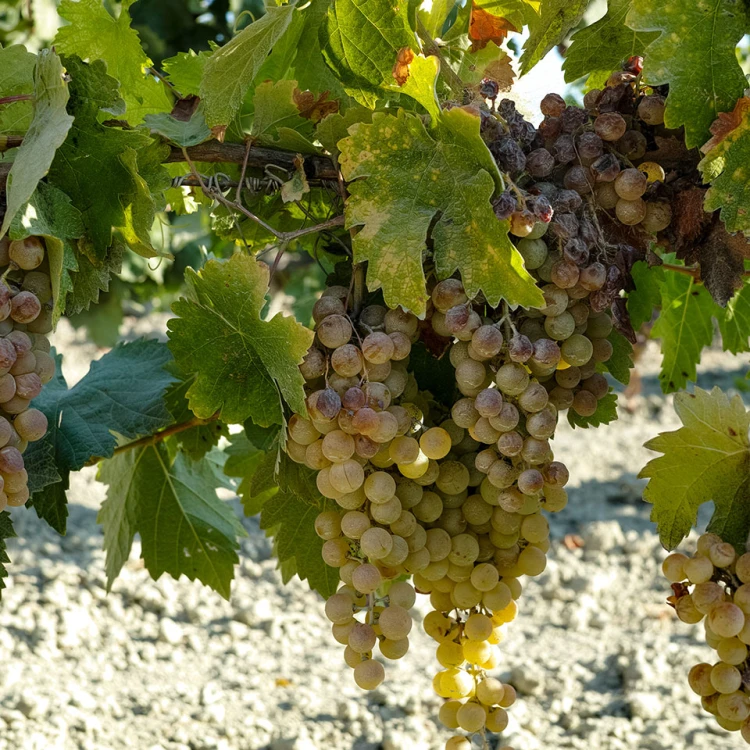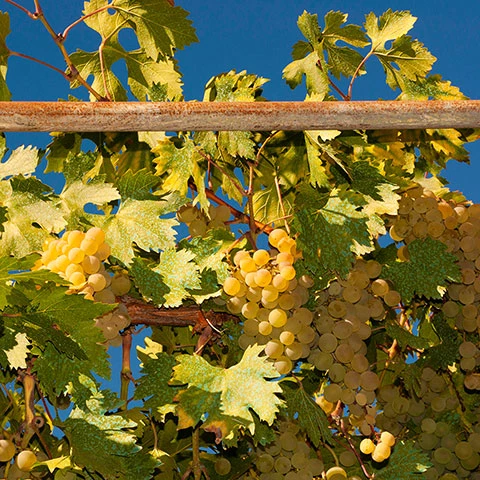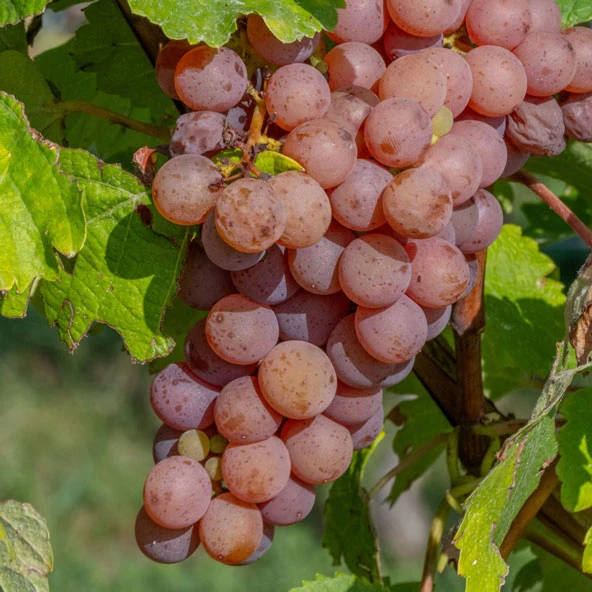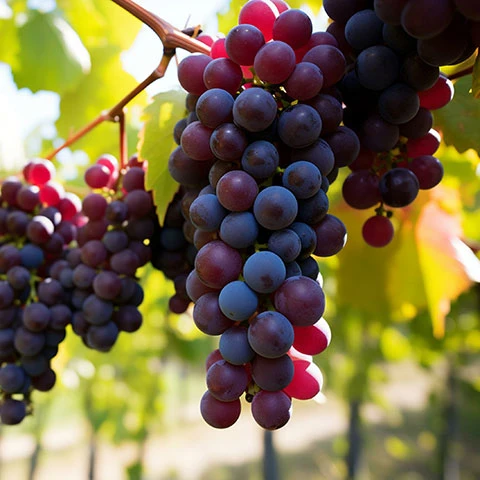Grape variety
Pedro Ximénez
Few grape varieties are as synonymous with sweet opulence as Pedro Ximénez - the basis for some of Spain's most famous dessert wines. However, it is now also showing another, surprisingly fresh side: as the basis for aromatic, dry white wines with a Mediterranean flavour. For a long time, the legend persisted that a German soldier named Peter Siemens brought the vine from the Rhine to Andalusia in the 16th century. Peter Siemens became Pedro Ximénez. Romantic, but false: DNA analyses prove that the variety has no German roots, but originates from southern Spain itself. The name is more likely to go back to a local winegrower - Ximénez is still a common family name in the region around Málaga. The variety has large, thick-skinned berries, is vigorous in growth but susceptible to botrytis. It produces high-alcohol, low-acid musts - ideal conditions for sweet wines such as the famous PX sherries or the once legendary wines from Málaga. For the classic Vinos de Jerez Dulces Naturales, the grapes are dried in the sun for a fortnight before being fermented and fortified with ethyl alcohol to around 15 to 17% alcohol. This produces deep brown, rich wines with flavours of sultanas, figs and coffee - the liquid essence of the south. But Pedro Ximénez can do more. In Montilla-Moriles, dry finos are also made from it today, and winegrowers in Málaga and Priorat prove that the variety can also produce fresh, complex white wines - proof that even old vines can tell new stories.












